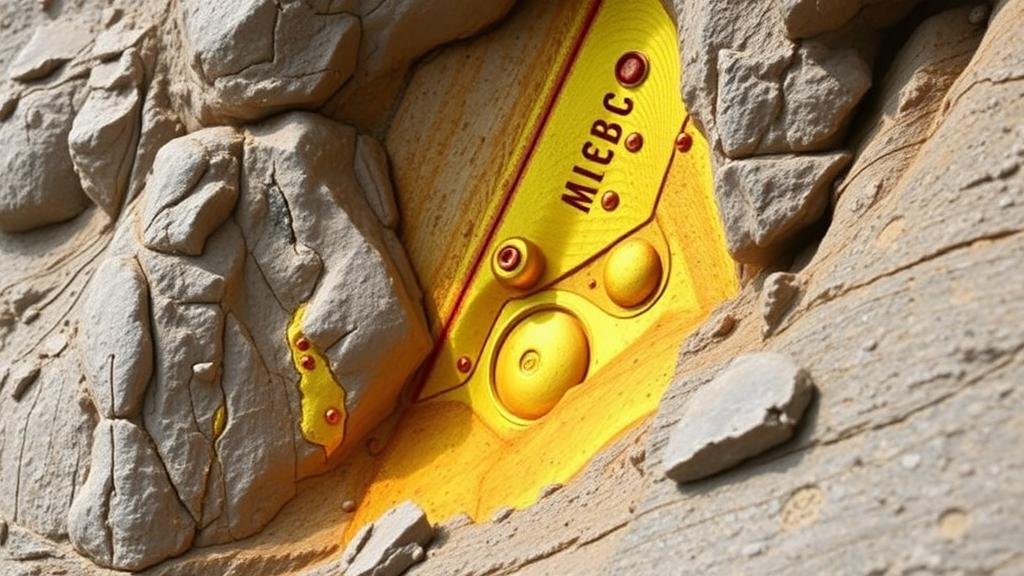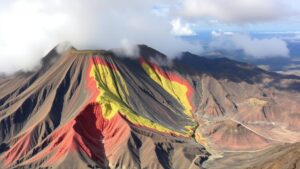Identifying Tell-Tale Signs of Blind Lode Deposits in Remote Areas
Identifying Tell-Tale Signs of Blind Lode Deposits in Remote Areas
Blind lode deposits, or concealed mineral deposits, pose unique challenges for geologists and prospectors, particularly in remote and rugged terrains. Unlike surface deposits, these hidden minerals are not directly visible, making identification a complex but critical task for mineral exploration. This article elucidates the key indicators of blind lode deposits and provides guidance on successfully identifying them.
Understanding Blind Lode Deposits
Blind lode deposits are defined as mineral ore bodies that lack any apparent surface exposure or distinct surface features. are often found buried beneath layers of soil, rock, or vegetation. The primary challenge is locating these deposits without the aid of standardized surface clues, which requires a comprehensive understanding of geologic, geochemical, and geophysical indicators.
Geological Indicators
Geological indicators are essential for prospectors aiming to locate blind lode deposits. Here are key geological features to consider:
- Host Rock Type: Knowing the type of rock that is associated with mineral deposition can guide exploration efforts. For example, quartzite frequently hosts gold deposits.
- Structural Geology: Faults, fractures, and folds can trap mineralizing fluids. Identifying these structures can indicate potential deposit locations.
- Alteration Zones: Hydrothermal alterations, such as silicification or argillic alteration, often signal the proximity to a deposit.
For example, in the Carlin Trend of Nevada, geologists observed extensive silicification and calcification in host rocks, leading to significant gold discoveries. Understanding the relationship between these geological features and potential mineralization can greatly enhance exploration chances.
Geochemical Indicators
Geochemical indicators are equally significant in the identification of blind lode deposits. Various techniques can be employed to analyze soil and sediment samples, which may reveal hidden mineralization. Important geochemical aspects include:
- Soil Geochemistry: Anomalous concentrations of elements such as gold, silver, or copper in soil samples can indicate underlying deposits.
- Stream Sediment Sampling: Sediments in nearby watercourses can provide insights into upstream mineralization.
- Rock Chip Sampling: Testing rock samples from exposed outcrops may yield information on the presence of deposits.
In exploration ventures, geochemists often employ multielement analyses and comparison of findings against baseline levels to identify anomalies that necessitate further investigation.
Geophysical Indicators
Geophysical surveys play a crucial role in the search for blind lode deposits by allowing exploration teams to investigate sub-surface characteristics without excavation. Key methods include:
- Magnetic Surveys: Changes in magnetic properties of rocks can indicate mineralization.
- Resistivity Measurements: Variations in the electrical resistivity of the subsurface can highlight areas of mineral accumulation.
- Ground Penetrating Radar (GPR): GPR can be effective for shallow subsurface investigations, revealing structures associated with lode deposits.
For example, in Canada’s Abitibi Greenstone Belt, magnetic surveys have successfully identified significant gold and copper deposits by detecting intrusive bodies associated with the mineralization process.
Practical Considerations in Remote Areas
Exploring for blind lode deposits in remote areas demands strategic planning and logistical considerations. Important factors include:
- Accessibility: Understanding the terrain and weather conditions is essential for planning field surveys.
- Environmental Impact: Adhering to regulations to minimize disruption to the surrounding ecosystem is crucial, particularly in sensitive areas.
- Community Engagement: Working with local communities can facilitate smoother operations and provide additional insights.
Utilizing modern technologies such as drones and mobile geochemical analysis can enhance efficiency and adaptability in remote explorations, allowing for comprehensive surveys even in challenging environments.
Conclusion and Actionable Takeaways
Identifying tell-tale signs of blind lode deposits requires a multi-faceted approach, integrating geological, geochemical, and geophysical methods. By understanding and applying these indicators, prospectors can enhance their chances of locating valuable mineral resources within remote terrains.
Key actionable takeaways include:
- Conduct thorough geologic surveys to identify structural features and alteration zones.
- Use geochemical sampling strategies to detect anomalies that hint at potential deposits.
- Use geophysical methods to probe underground without invasive techniques.
- Plan logistics with environmental and local considerations in mind.
By applying these strategies, explorers can effectively navigate the challenges of remote lode deposit identification and contribute to sustainable resource development.



